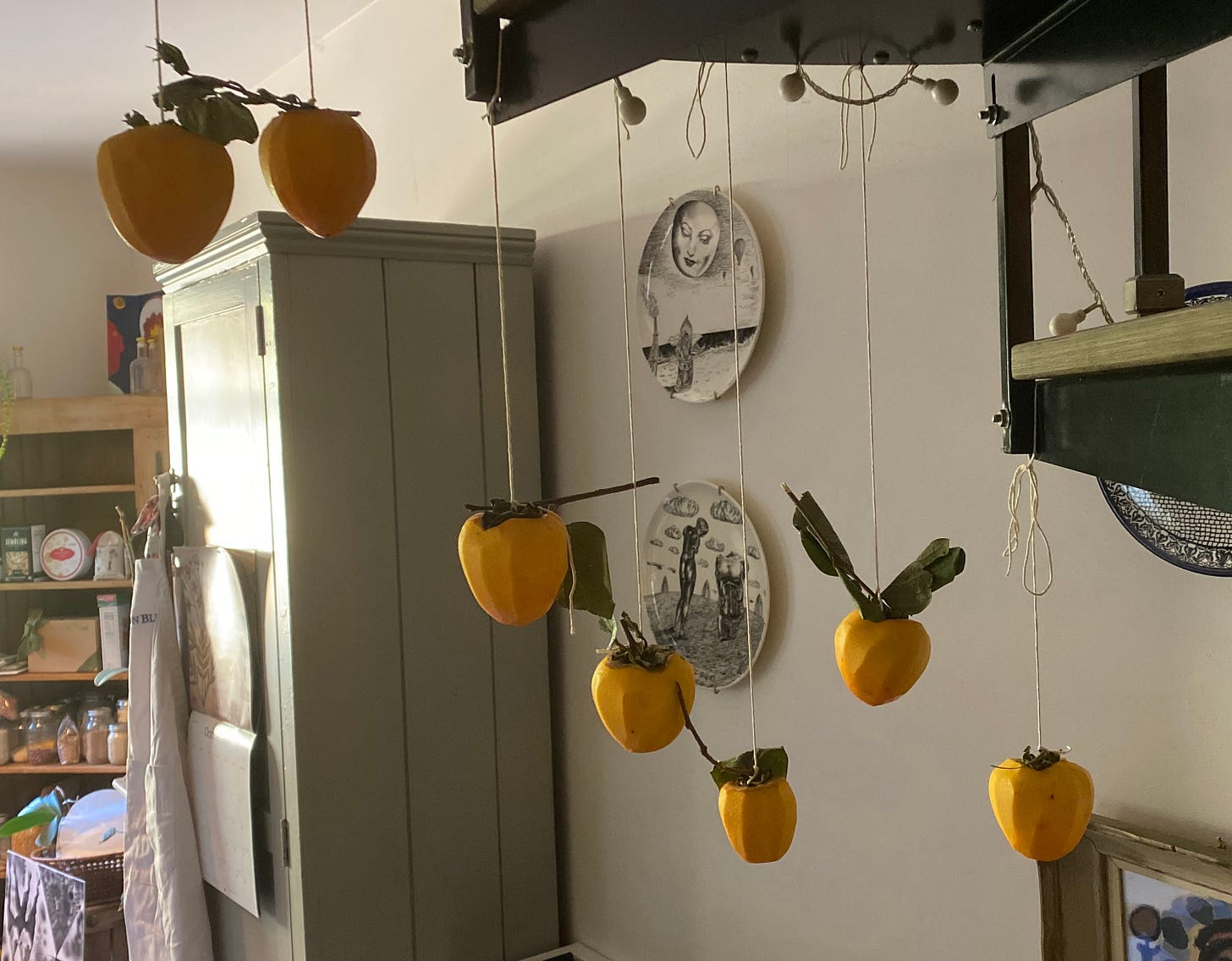By Jennifer Piette
Over the years of posting about food, the article which got the most clicks of all was my post about Persimmons! So I thought now would be a great time to talk Persimmons, since they are in season.
I first experienced the joys of persimmons when I lived in Paris back in the 80’s, where you would see them in the produce bins of our local bodega where I lived in Montmartre (most of these shops were run by Tunisian and Moroccan shopkeepers — the fruit grows in Morocco), and they went by the name “kaki”. At that time I had a group of friends that came from Morocco, Tunisia, Lebanon and Iraq. They would get together to play music, using traditional instruments like the houd (a short-necked, fretless lute), and punctuate their songs with lots of “inch’Allah" late into the night… I believe it was at one of these soirées that I first tried a kaki — ripened to a soft jello-like texture, bright orange, with flesh you could eat by the spoon — goopy, sweet, and decadent! You had to wait for this fruit to ripen to a soft jiggly texture to avoid a very unpleasant tannic mouth reaction (a sort of dry, unbearable pucker — if any of you has ever bitten into an unripe Hachiya persimmon you might be twice shy of this beautiful fruit).
Years later, when I arrived in California, I learned there were persimmons that didn’t boast this tannic danger and could be eaten hard, sliced like an apple. Very confusing! Let’s untangle the difference between the two varieties.
In California there may be a lack of fluorescent fall foliage like you get on the East Coast, but amidst the endless palms and succulent yuccas and hot Santa Ana October winds, beautiful fall colors show themselves in the produce and fruit coming into season: red pomegranates, orange kabocha squash, and perhaps the most luscious orange of all comes in the amazing array of persimmons coming into season in October and November.
So let's take a closer look at the two most prevalent varieties growing in California: fuyu and hachiya persimmons — which you can find in your grocery produce department, if you’re lucky.
Fuyu (see photo above) are the squat-shaped persimmons which are eaten while still hard and crisp. Perfect chopped into a salad, or eaten like an apple, they are a very different texture and experience from their distant cousin the Hachiya.
Hachiya are more elongated and need some time to go quite soft before they are ready to eat. Fully ripe, they should feel squishy like a water balloon or over-ripe tomato. Be patient, if you attempt to eat one before it has softened, it can be unpalatably astringent (or 'furry' tasting) as Hachiyas contain very high levels of soluble tannins. In other words, they can leave a nasty taste in your mouth.
Once ripe, my favorite way to eat a Hachiya Persimmon, is to cut off the top where the leaves are, and just dig in with a spoon, like a natural-made jelly cup. The texture will be gooey, sweet, and delicious.
But there's more to Hachiyas than that: it is the Hachiya persimmon which is also traditionally dried -- hung from a string and dried in the sun until it becomes a dense, sweet treat particularly enjoyed around the holidays. Hoshigaki is the name of this incredible Japanese delicacy. Looking a bit shrivelly and not particularly beautiful, they simply melt in your mouth, a bit like dense Turkish Delight. Here is a lesson in making Hoshigaki at home, by Sonoko Sakai, an incredible source of all things Japanese cuisine.
Now that I live in Maine, I don’t expect much in the way of persimmons, though I have been very excited to find California Hachiya’s at our local Coop, and have brought a few of the precious treasures home to enjoy. Yum! Let us know your thoughts about Persimmons in the comments!









